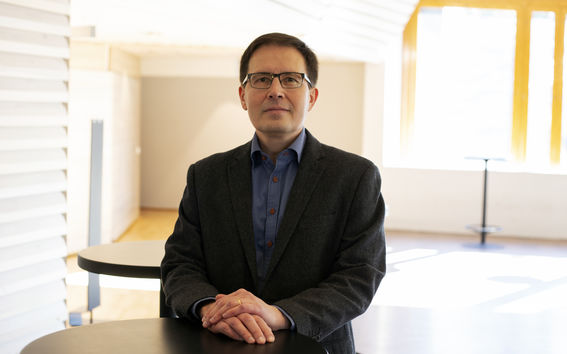Space professor's research looks twenty-five years into the future

Professor Esa Kallio, what do you research and why?
My research looks into the Sun’s effect on celestial bodies in our Solar System – the planets, moons, comets, and asteroids.
To do this, we use space plasma simulations and instruments built for use in space missions. We currently have a data-gathering instrument on the European Space Agency’s Mars Express Mars mission, with another being sent to Mercury on the BepiColombo mission on the 20th of October. We are also currently testing a similar type of equipment, which is due to be sent to Jupiter in 2022.
One of the aims of this research is to improve our understanding of planetary atmospheres and the way they develop. The hope is that this will also lead to clearer picture of the phenomena in our own planet’s atmosphere. Venus, Earth, and Mars are neighbouring planets and they are often compared to each other. Of these, Venus is the hottest by far – it’s a real furnace! In fact, while Venus and Earth have about the same amount of carbon dioxide, in Venus it is almost entirely found within its atmosphere rather than being contained within the planet itself. It's the kind of arrangement we really don’t want here on Earth! The atmospheric pressure on Venus is also horrendous. For its part, Mars has quite a weak atmosphere, making it unable to support life.
How did you become a researcher?
I think perhaps the most important factor is my childlike imagination, which hasn’t diminished at all, even after all these years. After all, children are natural researchers – they're interested in everything, never stop asking questions, and never stop wondering about the world around them.
I think it’s fair to say I’ve been interested in space for so long that I can’t even remember what first got me hooked. Fortune has certainly played a large part in my career. My mentor at the University of Helsinki encouraged me to go for a summer job doing Mars research and it was there that I got the opportunity to analyse the data collected by the first Finnish space instrument in 1989. After this came my master's thesis and then my PhD – and I haven’t left the space research path yet.
Esa KallioYou have to be able to persevere and remain confident that everything will turn out right.
What have been the highlights of your career?
Putting the instruments together is a team effort, with projects involving tens of teams from all over the world. And the construction process can take up to a decade, making it feel really sweet when you’ve completed the part you are responsible for. Naturally, the launches themselves are the crowning glory, but the moment you finally receive the data from the instruments is amazing in its own right. It’s little peaks like these that show we've been successful in what we set out to achieve over two decades ago.
I have been incredibly lucky in my career. So much so, in fact, all except one mission I've been involved with has succeeded. It goes without saying, of course, that many other people have gone before me and poured hundreds of hours into making the instruments I am now able to put to use. And the generations to come after me will benefit from my work in the same way. It's almost like repaying one's debts.
I also have to say it feels amazing when our research team manages to be the first in the world to achieve something. One example of this kind of thing is the model we've made of the space weather on Mercury, which we produced by using an extremely precise simulation technique.
What is required from a researcher?
A researcher should not worry too much about what other people think. You have to be able to persevere and remain confident that everything will turn out right, even when that isn’t always the case.
We have been working on the instrument we're sending to Jupiter for more than ten years. And if everything goes to plan, it will reach its destination in 2030. This means that the time between the start of the project and the data being received could be a quarter of a century. Commitment and patience are indeed required!
What do you expect from the future?
I would like to continue doing pretty much the same kind of research I've worked on so far in my career. We are also excitedly awaiting the launch of our own small satellite Suomi100, part of Finland's centenary celebrations, which is due to take place at the end of November. One of the great things about this kind of small satellite is that the data can be retrieved only a few days after the launch!
Esa Kallio is among a host of newly-tenured Aalto University professors presenting their research at the Installation Talks event, to be held on 24th October 2018. We hope to see you there!
More information here
Photo: Mortti Saarnia
Read more news

Topics raised in the 2025 Learning Centre customer survey
Thank you to everyone who participated in the survey!
Elites wield huge influence over deepening polarisation –– now we can tell exactly how much
Researchers used network theory to develop a method for measuring the impact of individuals on societal division.






